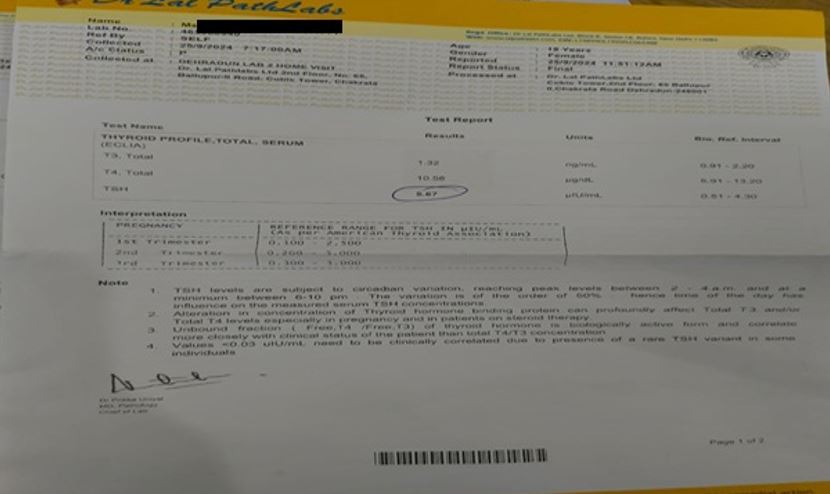Management of Hypothyroidism with Ayurveda - A Case Study
DOI:
https://doi.org/10.21760/jaims.10.6.56Keywords:
Hypothyroidism, Ayurveda, Agnimandya, Medo-DushtiAbstract
The most prevalent endocrine disorders in the world are thyroid issues. TSH is the most practical physiological indicator of thyroid gland function and is crucial in regulating the thyroid axis. One major factor contributing to the rise in endocrine disorders, including thyroid disorders, may be a sedentary lifestyle and poor eating habits. Numerous Kaphaja Nanatmaja Vikaras are thought to be signs of hypothyroidism. Multiple systems are affected by the clinico-pathological condition known as hypothyroidism, which necessitates multimodal treatment. Shamana Chikitsa implemented the treatment plan in order to combat the pathophysiology. Even after two months, the patient's symptoms had completely disappeared. Laboratory tests were conducted during routine follow-ups and subsequent treatments.
Downloads
References
Association of Physicians of India. API Textbook of Medicine. 7th ed. Mumbai: Association of Physicians of India; 2003. p. 1051.
Association of Physicians of India. API Textbook of Medicine. 7th ed. Mumbai: Association of Physicians of India; 2003. p. 1057.
Agnivesha. Charaka Samhita. Sutrasthana 28:13–15. In: Shukla V, Tripathi R, editors. Delhi: Chaukhamba Sanskrit Pratishthan; 2003. p. 430.
Shukla V, Tripathi R. Charaka Samhita of Agnivesha: Chikitsa Sthana. 15:39–40. Delhi: Chaukhamba Sanskrit Pratishthan; 2006. p. 367.
Ilavarasan R, Arunadevi R, Kusuma G, Gaidhani SN, Thenmozhi M, Manikandan N. Evaluation of anti-arthritic and in-vitro anti-inflammatory activity of Vaisvanara Churna. J Ethnopharmacol. 2025 Jan 30;337(Pt 1):118774. doi: 10.1016/j.jep.2024.118774. PMID: 39218128.
Taru P, Syed S, Kute P, Shikalgar M, Kad D, Gadakh A. Dashamoola: A systematic overview. GIS-Zeitschrift für Geoinformatik. 2022;9:1334–45.
Kadam S, Tiwari P. Critical review of Shadang Paneeya: an Ayurvedic herbal formulation with potential immunomodulatory and therapeutic benefits. Int J Ayurveda Pharm Res. 2024;12(10):98–102.
Government of India, Ministry of Health and Family Welfare, Department of Indian Systems of Medicine and Homoeopathy. The Ayurvedic Formulary of India. Part I. 2nd ed. Delhi: Controller of Publications; 2003. p. 388–9.
Mylotte JM, McDermott C, Spooner JA. Prospective study of 114 consecutive episodes of Staphylococcus aureus bacteremia. Rev Infect Dis. 1987;9(5):891–907.















